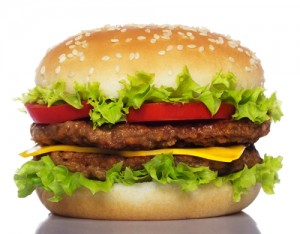
Fast casual burger restaurants like Five Guys Burgers and Fries have made a recognizable dent in the margins of fast food burger franchises. Even market leader McDonald's has made small adjustments to its menu to counter the rise of fast casual dining. However, it is the divergent strategies of Burger King and Wendy's that better reflect the full spectrum of ideas for how burger franchises can respond to increased competition.
Wendy's targets selective millennials
The Freckled Lady has responded to increased competition from fast casual restaurants, in particular the popularity of fast casual options among millennials, by adapting its own menu to better fit the taste profiles of a more particular youth market. For example, QSR reports that the franchise has eliminated underselling salads from the menu and replaced those items with healthier, more exotic salad options.
Wendy's has also fully invested in the marketing of rotating limited time offer options to bring in new customers. Items like the new Pretzel Bun and last year's flatbread promotion are designed to reposition Wendy's as a top choice for consumers searching for complex flavors at an inexpensive price. Direct competition with higher-priced casual restaurants like Panera Bread has also allowed Wendy's to up the price of its premium items without alienating the pocketbooks of traditional fast food customers.
These menu updates, in conjunction with the millennial-oriented "Now That's Better" campaign, are a focused attempt by Wendy's to target those customers in their 20s that would typically trend toward a fast casual dining experience. QSR notes that critics have argued that Wendy's attempt to expand its appeal has weakened its core brand, but Wendy's positive numbers over the past few years have quieted the doubters. Wendy's has also mitigated the loss of customers as a result of brand evolution by upgrading its value menu as well.
Burger King believes in the franchising blitz
The King has taken a divergent path from Wendy's attempt to mimic the appeal of fast casual restaurants. Instead, Burger King has chosen to transform the vast majority of its locations to franchise stores. Only 1 percent of stores are still owned and operated by Burger King. The remaining 99 percent are now run by independent franchise owners, says Forbes. Burger King minimized risk and operating costs while taking full advantage of royalties from its 13,000 franchised locations, while allowing franchisees to take the reigns of driving revenue and new products through personal innovation.
Ironically, both Burger King's and Wendy's strategies mimic the path of McDonald's. The Golden Arches introduced premium sandwiches and coffee to its menu years ago, and the company's franchising success has been dominant. It is fitting that the highly profitable McDonald's brand continues to demonstrate market leadership, and it remains to be seen if rivals Burger King and Wendy's can continue to capitalize on their new strategies.